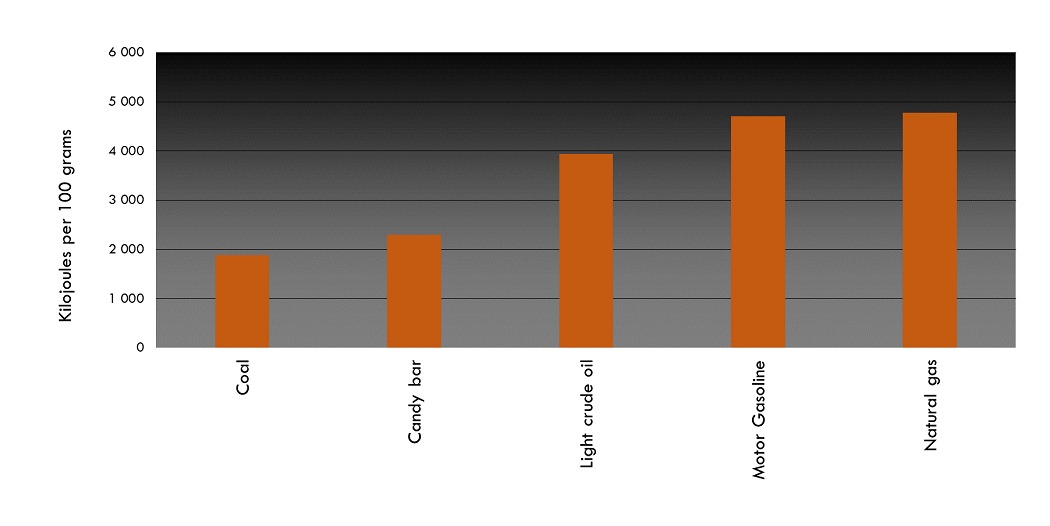Market Snapshot: Is Halloween candy a viable fossil fuel alternative?
Release date: 2018-10-30
Across Canada, each Canadian consumes almost 136 grams of confectionary items around Halloween each year. In energy terms this translates to about 57 000 gigajoulesFootnote 1. That is nearly the same amount of energy needed to heat 570 Canadian households for one year. That’s a lot of energy! When compared to common fossil fuels Halloween candy can pack a bigger energy punch than coal but not as big as light crude oil or natural gas.
Halloween candy contains calories. Calories are the measure of energy content found in carbohydrates, fat, and protein. Like candy, fossil fuels also contain energy which is stored in the bonds between hydrogen and carbon atoms. Just like different types of food have different amounts of caloric content, different fossil fuels have different amounts of energy content.
The chart below compares the energy content of Halloween candyFootnote 2 to commonly used fossil fuels in kilojoules per 100 grams.
Energy Content

Source and Description
Source: Statistics Canada, GBX , NEB calculations
Description: The column chart illustrates the energy content of selected fossil energy sources and candy bars, expressed in kilojoules per 100 grams. From the lowest to highest energy content:
- Coal (subbituminous): 1879 kilojoules
Candy bar (chocolate, fudge, or cookie): 2301 kilojoules
Light crude oil: 3941 kilojoules
Gasoline: 4703 kilojoules
Natural gas: 4778 kilojoules
Halloween candy might not be quite the sweet fossil fuel alternative we’ve been looking for but it tastes better!
- Date modified:
